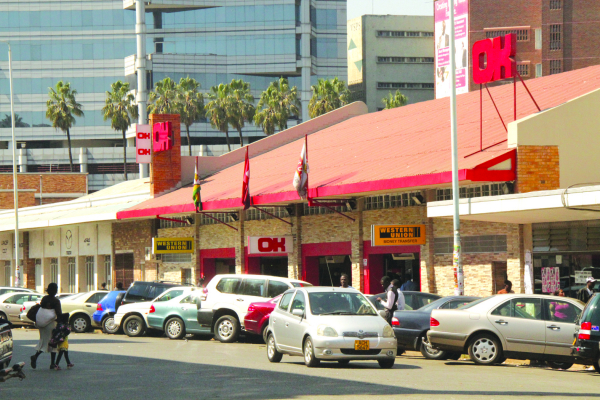By ETimes
HARARE – THE circular issued by OK Zimbabwe Limited (OKZL) presents a comprehensive and urgent restructuring proposal designed to address severe financial distress that has crippled the company.
For investors, this circular is a critical disclosure that highlights both the depth of the challenges facing the company and the ambitious recovery strategy being pursued.

Sources: OK Zimbabwe
OKZL’s financial distress is laid bare through disclosures of over US$30 million in overdue debts, declining operational capacity, and a risk of judicial recovery actions from creditors. The company is essentially insolvent on a cash flow basis, unable to meet obligations as they fall due. This dire situation is partly blamed on internal failings (poor capital allocation, inefficient cash flow management) and external shocks (economic instability, regulatory disadvantages). The frankness of this assessment enhances the credibility of management’s new strategy but also underscores the severity of the crisis.
The response from the Board is twofold: a Rights Offer of US$20 million and the disposal of immovable properties to raise an additional US$10.5 million. The Rights Offer is structured as a renounceable issue at a discounted price of US$0.0109 per share — a 15% discount to the 30-day Volume Weighted Average Price (VWAP) — suggesting a clear intent to incentivize shareholder participation. Furthermore, it is underwritten and backed by irrevocable commitments from shareholders holding 73% of the company’s issued capital, mitigating execution risk.
Notably, the Rights Offer is priced in USD and payment is required exclusively in hard currency. This is a critical shift reflecting Zimbabwe’s monetary instability and lack of confidence in local currency, and it is a practical solution to ensure inflows of usable capital. However, it also sets a precedent for future capital requirements and may limit participation by local retail investors without USD liquidity.
In tandem, the disposal of real estate assets, including flagship retail and warehouse properties, aims to raise liquidity without increasing leverage. While the sale-leaseback model for operational properties is financially sensible, it strips the company of long-term asset control and potential capital appreciation, effectively trading future optionality for short-term solvency. This should be viewed as a necessary but costly survival mechanism.
The turnaround strategy detailed in the circular is multifaceted: leadership renewal, store and brand optimization, digitization (including a new e-commerce platform), and modern customer engagement. If effectively executed, these steps could reinvigorate the company’s value proposition and align it with evolving consumer preferences. However, execution risk is high given the current leadership’s transitional nature and the historical track record of mismanagement.
Importantly, OKZL also signals an intention to restore dividend payments by FY27 — a move that may be seen as optimistic given the scale of restructuring required, but also indicative of management’s long-term ambition.
Implications for Investors
For existing investors, the circular represents a pivotal moment. Participation in the Rights Offer is not just an opportunity — it is arguably a necessity to avoid dilution. The offer is deeply dilutive (more than doubling the issued shares), and failure to participate could result in a substantial erosion of shareholding and influence. On the upside, committed underwriting ensures that even if not all shareholders participate, the capital will be raised, and the company has a fighting chance at recovery.
However, the financial metrics post-offer paint a sobering picture. The Net Asset Value (NAV) per share declines from US$0.0587 to US$0.0310 after the Rights Offer — a direct consequence of equity dilution. This suggests that in the short term, shareholder value is being sacrificed to preserve the corporate entity itself. Investors should view this as a “reset” rather than a value-enhancing transaction.
The financials further confirm the crisis: OKZL posted a USD loss of US$21.5 million for the 11 months ending 28 Feb 2025, with negative cash flows from operations. While these losses are addressed by the proposed capital raise, the ability of the new management to reverse these trends will be closely watched.
Investors must weigh the clear execution risk of the turnaround strategy against the systemic risk of non-participation. While the support of institutional shareholders like NSSA, Datvest, and Old Mutual is reassuring, the ultimate success will depend on whether the operational reforms can translate into profitability and market relevance.
Our thoughts
This circular is a stark call to action. OKZL has reached a financial breaking point, and the Rights Offer and asset disposals are essentially a life raft. For investors, this represents both a threat (dilution, short-term NAV erosion) and an opportunity (potential long-term recovery and capital gains if the turnaround is successful). The company’s transparency, the backing of key shareholders, and a detailed strategic roadmap lend credibility to the plan. However, the situation remains precarious, and investors should approach with cautious optimism, recognizing that this is a high-risk restructuring play — with potentially high rewards if successfully executed.

Discover more from Etimes
Subscribe to get the latest posts sent to your email.




